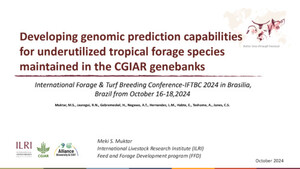
Increasing nutrient use efficiency through improved feeding and manure management in urban and peri-urban livestock units of a West African city: A scenario analysis
Abstract
In many African cities urban and peri-urban agriculture (UPA) plays a major role in creating jobs and contributing to food security. However, many small-scale UPA systems are characterised by excessive nutrient inputs to the livestock unit and poor handling of manure. To assess the impact of improved feeding and manure management on nutrient use efficiency within the cattle unit, simulation modelling was used to compare three typical UPA farm types in Niamey, Niger, that comprised: animal husbandry alone (AH), animal husbandry plus gardening (AH+G), and animal husbandry plus gardening plus millet cultivation (AH+G+M). Improved feeding increased annual body weight gain and milk offtake from cattle and reduced the amount of nitrogen (N) excreted in urine, thereby lowering the risk of N emissions. With improved manure management, dry matter (DM) and nutrients recycled per animal and year, and potentially available for cropping, ranged from 321–690 kg DM, 8–22 kg N, 1.2–2.5 kg phosphorus (P), and 3.0–5.6 kg potassium (K) in AH as well as AH+G+M farms compared to 221–479 kg DM, 5.0–14.0 kg N, 0.7–1.6 kg P, and 2.0–4.0 kg K in AH+G farms. These amounts were up to 2.2-, 2.5-, 1.9- and 1-fold higher than the quantities of DM, N, P and K recycled under current practices. Feeding dairy cattle according to their requirements will enhance milk and meat production; if coupled with regular manure collection and low-cost covering of manure heaps, substantial amounts of nutrients are recycled to cropland and vegetable gardens and environmental pollution is reduced.
Citation
Rodrigue, V.C., Diogo, R.V.C., Schlecht, E., Buerkert, A., Rufino, M.C. and Wijkk, M.T. van. 2013. Increasing nutrient use efficiency through improved feeding and manure management in urban and peri-urban livestock units of a West African city: A scenario analysis. Agricultural Systems 114: 64-72.









